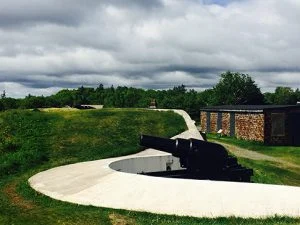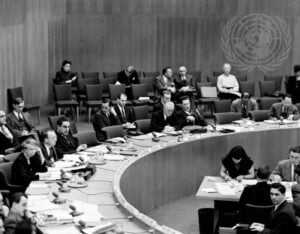
History
Parks Canada places commemorating the First World War
Sites across Canada honouring the war
- 1412 words
- 6 minutes
This article is over 5 years old and may contain outdated information.
History

Growing up in a Ukrainian family, Ryan Boyko was relentlessly dragged to community events. As a teenager in Saskatoon, he wanted little to do with anything Ukrainian — until he attended a film screening. It was a documentary that touched on Ukrainian internment operations in Canada during the First World War.
Struck by what he saw, he asked his 10th-grade history teacher about the internment operations. “You mean the Japanese internment during the Second World War?” the teacher clarified.
“No,” Boyko answered. “I mean the Ukrainian internment during the First World War.”
What his teacher said next stunned Boyko: “That never happened.”
Two decades later, those words form part of the title of a new documentary, directed and co-written by Boyko, that traces the Canadian government’s internment operations between 1914 and 1920.
That Never Happened: Canada’s First National Internment Operations will screen before the September 2018 session of the UN Human Rights Council in Geneva as part of its celebration of the 70th anniversary of the Declaration of Human Rights. It will then have a limited theatrical release in Canada in October.
During the First World War, the Austro-Hungarian Empire fought against Canada and its allies. Although the fighting took place in Europe, the government at home passed the War Measures Act — legislation that enabled authorities to curtail civil liberties in order to protect Canada and its citizens. Some 80,000 Ukrainians were obliged to register as “enemy aliens” and report frequently to the police. Many lost their jobs, and were treated with suspicion by their communities. And, about 5,000 were interned in rural and remote camps. Many were forced to perform back-breaking labour in the heat of summer and the dead of winter, returning at night to dark, cramped and poorly insulated cabins. The film shows detainees carrying giant logs on their backs, and clearing woodlots with axes.
Visitors to Banff National Park in Alberta — one of Canada’s most beloved natural landmarks — may be shocked to learn that the park was the site of the largest and most abusive internment camp in the Rockies, and that prisoners were set to work there building roads and other infrastructure.
Boyko’s film also delves into the hardships of women and children who were left to fend for themselves in the wake of the arrests. Although their stories were difficult to hear, Boyko felt both a sense of honour and duty to tell them. “We did everything that we could have to ensure that we were telling these stories as delicately and as truthfully as possible,” he says.
Boyko hopes the documentary will serve as a prompt to educators to acknowledge this little-discussed aspect of the war years in Canada.
“I think that right now, there is a conversation that needs to be had, and that conversation is around human rights, immigration, and responsibility to one another as human beings,” he says.
Are you passionate about Canadian geography?
You can support Canadian Geographic in 3 ways:

History
Sites across Canada honouring the war

History
On Dec. 10, 1948, the United Nations adopted an aspirational document articulating the foundations for human rights and dignity, but who was the Canadian that helped make it possible?

Environment
As the impacts of global warming become increasingly evident, the connections to biodiversity loss are hard to ignore. Can this fall’s two key international climate conferences point us to a nature-positive future?

Science & Tech
Celebrating Canadian Innovation Week 2023 by spotlighting the people and organizations designing a better future